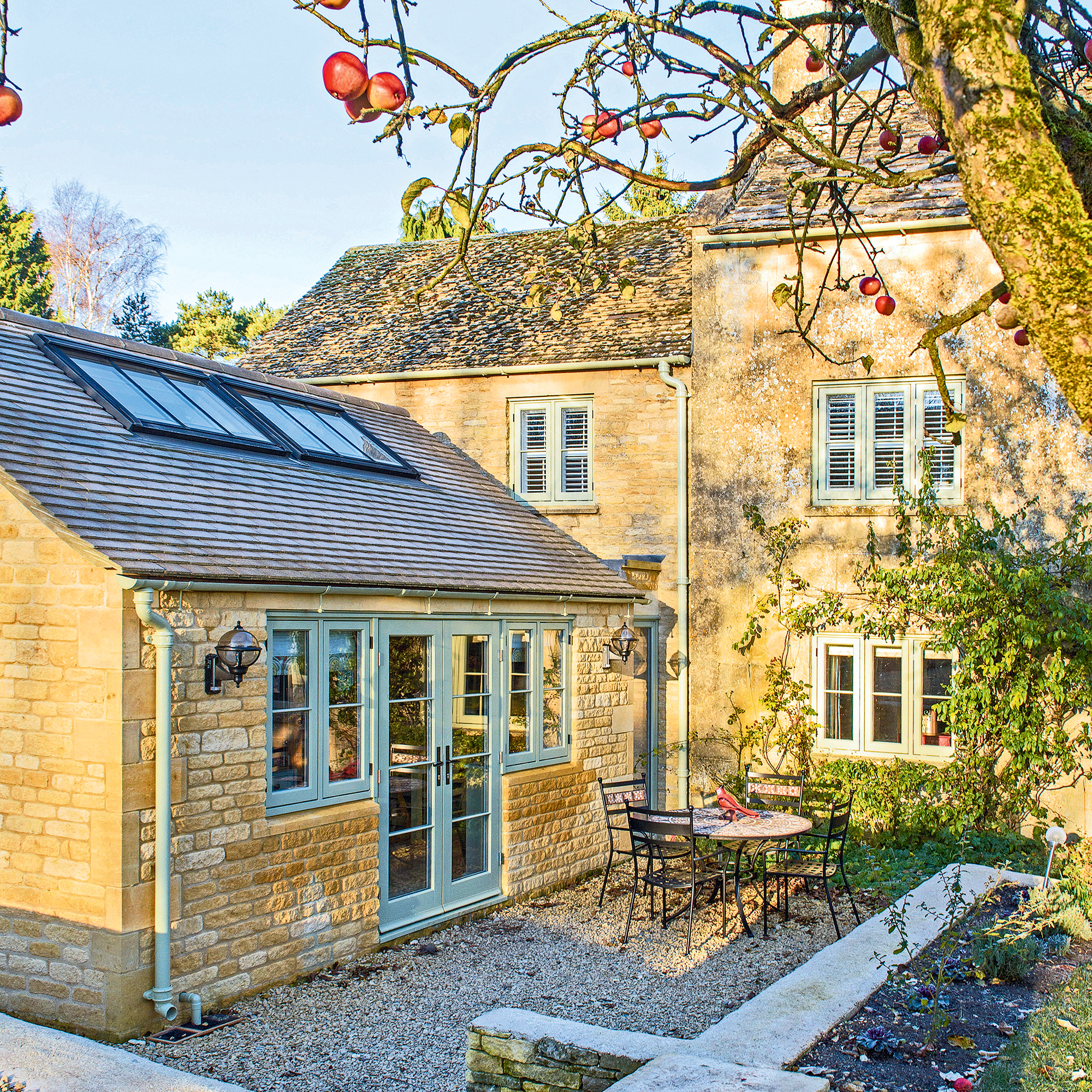Get your house cold weather ready by learning from the experts
Make sure your home is ready to battle the elements by paying attention to these oft-overlooked areas


As well as parties and celebrations, the winter months also brings some more challenging events. Although we should be used to cold weather by now, especially in the UK, the unfortunate truth is that many of our homes are simply not prepared for it.
Currently, most of us are focused on how to our houses warm in winter. And while that's, of course, incredibly important, there are other aspects to bear in mind at this time of year. Caught unprepared, strong winds and rain can cause damage to your exterior, while icy cold weather can cause pipes to freeze. Roofs especially, are prone to damage.
How to get your house cold weather ready
When it comes to cold weather, it's understandable that minds tend to go straight to how to save energy at home. And just as important as keeping the interior warm is making sure the exterior is safe and protected from the elements.
After all, being properly prepared for the cold weather will save you money and stress in the long run.
1. Clear debris on your roof and gutters

'Every year roofing issues cause damage to properties,' says Phil Wallis, technical manager at roofing expert Marley. 'For roof maintenance, start by ensuring that leaves and debris are removed from valleys and gutters, and that moss and lichens are removed as they can affect the flow of rainwater.'
'Moss often grows on roofs and structures that don't receive much sunlight, including those that are north-facing or under trees. The growths typically occur on the tile surface and between roof tiles, and the big issue with this is that it can cause moisture retention and tiles to lift.'
Make sure you learn how to clean your gutters, so you don't have to get the professionals in.
Get the Ideal Home Newsletter
Sign up to our newsletter for style and decor inspiration, house makeovers, project advice and more.
2. Check for cracked roof tiles

Check for any cracked, missing or loose tiles and replace them. If a roof is in disrepair, strong winds and the weight of snow can wreak havoc on your roof. Make sure you look for cracks and loose render around chimney pots and at the roof join. High winds and other storm damage can worsen chimneys even further so make sure they’re properly stable before the worst of the weather kicks in.
'When a clay or concrete roof tile becomes loose, damaged, or falls off, it makes the underlying roof structure vulnerable to weather damage and leaks,' explains Phil from Marley. 'This can often be noticed inside the property from the attic space, particularly on older structures. Internal inspection should always be accompanied by an external inspection, carried out by trained operatives using suitable roof access equipment.'
'A good tip instead is to take regular pictures. Even a photo from a phone camera across the road, but on a bi-annual basis, will enable you to zoom in and spot any significant movement or shifting tiles early on. Of course, if you have noticed cracked slate or broken roof tiles on the floor around your property, seek immediate help.'
3. Check for attic for leaks

Leaks are one of those things that the sooner you spot them, the easier they'll be to manage. In loft spaces, look for signs of water damage or damp, as this will indicate if there's a problem - leaks aren't always like continuously dripping taps.
If you have a rooflight, go up on a bright day, otherwise, whip out the torch and do as thorough an inspection as you can.
4. Take a look at your solar panels

As solar panels become more popular, they also become another thing you should keep an eye on in the cold weather.
'At this time of year, solar installations should be checked to ensure panels are clear of debris and foreign matter which can affect performance and check there are no signs of visible damage or degradation,' advises Phil from Marley. 'Consider updating very old or outdated solar solutions to ensure full efficiency and property safety.'
5. Ensure your home is properly insulated

When it comes to insulating your home, it's not always a one and done solution. As the cold weather approaches, take this as an opportunity to assess if you need more, or different, insulation.
'There are some tell-tale signs that your home’s insulation could be improved upon,' advises Stephen Hankinson, Managing Director, Electric Radiators Direct. 'If you feel lots of cold draughts and breezes in your home, this is a sign that your home needs better draught proofing. If your house immediately gets colder after you’d turned the heating off, then this could indicate that heat is escaping too quickly.'
6. Inspect doors and windows

Often, the source of lost heat in your home is commonly down to draughty doors or windows. You should check if you have a draught by simply feeling for any cold air coming through and adding draught proofing strips, available from £3.49 on Amazon, if needed.
There are some additional signs to pay attention to, as well. 'These include cracked window panes, a cracked or damaged seal or condensation on the windows or between the panes of glass,' says Adam Pawson, property expert, Safestyle. 'If you do spot any of these signs, don’t worry because there are a couple of quick fix solutions you can try. One budget friendly hack you can try is to use clear nail polish to paint over the cracked seal. You might need to paint on two to three coats to ensure the crack is fully covered.'
Take a look at your window frames, filling any cracks and putting on a coat of paint if needed. Extreme temperatures and wet weather can cause untreated wood to expand and rot, so treating windowsills helps to prevent this.
7. Install pipe lagging

Apply pipe lagging to any pipes and water tanks in exposed areas such as lofts, garages and utility rooms to prevent pipes freezing and bursting in the cold weather. The last thing you want is to be left without a water supply.
This type of addition insulation can be picked up from as little as £1.38 per m at B&Q.
8. Prevent your pipes from freezing over

Set the central heating to a minimum of 14 degrees Celsius throughout the winter. This helps prevent frozen pipes and frost damage.
If you do find yourself with a frozen pipe, simply pour warm water over the exposed end of the pipe to melt the frozen water and remove the blockage, then reboot your boiler. One of the quickest and easiest DIY home repairs you'll have to do, but with serious long-term benefits. If your pipes stay frozen you won't feel the benefits of your heating and your boiler is going to suffer the consequences further down the line.

Thea Babington-Stitt is the Managing Editor for Ideal Home. Thea has been working across some of the UK’s leading interiors titles since 2016.
She started working on these magazines and websites after graduating from City University London with a Masters in Magazine Journalism. Before moving to Ideal Home, Thea was News and Features Editor at Homes & Gardens, LivingEtc and Country Homes & Interiors. In addition to her role at Ideal Home, Thea is studying for a diploma in interior design with The Interior Design Institute.
-
 Wood drenching is the calming new twist on the colour drenching trend – here’s how to make the look work in your home
Wood drenching is the calming new twist on the colour drenching trend – here’s how to make the look work in your homeIt’s easier than ever to embrace natural materials
By Maddie Balcombe
-
 Aldi is launching a £200 day bed with four different features - its sleek design is suited to the whole family
Aldi is launching a £200 day bed with four different features - its sleek design is suited to the whole familyYou don't want to miss out on this Specialbuy
By Kezia Reynolds
-
 How to set up a drip watering system that saves water and a lot of effort
How to set up a drip watering system that saves water and a lot of effortKeep your plants hydrated (and your water bill down) with this clever garden watering solution
By Natalie Osborn